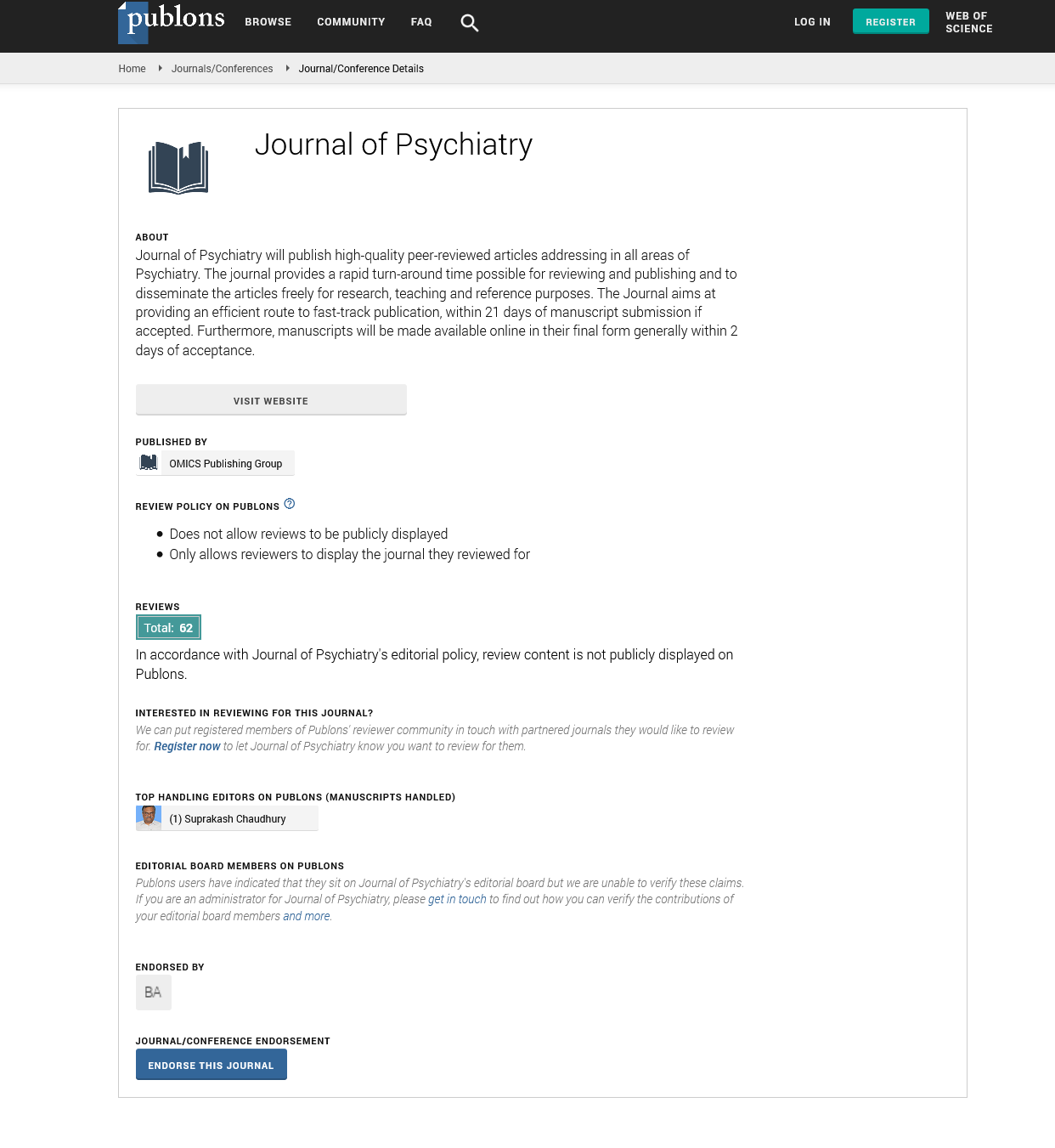PMC/PubMed Indexed Articles
Indexed In
- RefSeek
- Hamdard University
- EBSCO A-Z
- OCLC- WorldCat
- SWB online catalog
- Publons
- International committee of medical journals editors (ICMJE)
- Geneva Foundation for Medical Education and Research
Useful Links
Share This Page
Open Access Journals
- Agri and Aquaculture
- Biochemistry
- Bioinformatics & Systems Biology
- Business & Management
- Chemistry
- Clinical Sciences
- Engineering
- Food & Nutrition
- General Science
- Genetics & Molecular Biology
- Immunology & Microbiology
- Medical Sciences
- Neuroscience & Psychology
- Nursing & Health Care
- Pharmaceutical Sciences
The use of digital devices in the study increases the rates of migraine incidence among medical school students, King Abdulaziz University, Jeddah, SaudiÃ? Arabia: A cross-sectional study
4th Global Congress on Neuroscience Psychiatry and Mental Disorder
November 18-19, 2024 | Paris, France
Omar Mansour Alhazmi
King Abdulaziz University, Saudi Arabia
Scientific Tracks Abstracts: J Psychiatry
Abstract:
Migraine is the most common neurological condition which affects virtually everybody during their lifetime minimally once. Globally, migraines are highly prevalent among medical college students. This research aimed to determine whether there is an association between learning from electronic devices and migraine prevalence among medical students at King Abdulaziz University (KAU), Jeddah, Saudi Arabia. This cross-sectional study was carried out on 398 students (both sexes) in different academic years at the faculty of medicine, KAU, Jeddah, Saudi Arabia. The data were collected using a closed-ended questionnaire. The results revealed that more than half of the participants (52.5%) suffered from migraine in earlier periods of their lives. The key indicators of migraine were female (60.8%), school days (90.9%), positive family history (76.6%), adolescence (54.1%), an electronic source in studying (52.2%), and screen exposure for more than 4 hours daily (61.3%). Furthermore, there was a significant association between migraine and gender, family history, electronic source of study, duration of screen exposure, and adolescence. The findings of this research revealed that students of the medical school who suffer from migraine could attribute to the usage of digital study methods such as a laptop, a computer, or a tablet in studying with screen exposure for long periods.
Biography :
Omar Mansour Alhazmi is a house officer at King Abdulaziz University and graduated with a GPA of 4.4 with 1 published Research in neuroscience and 3 ongoing research.

